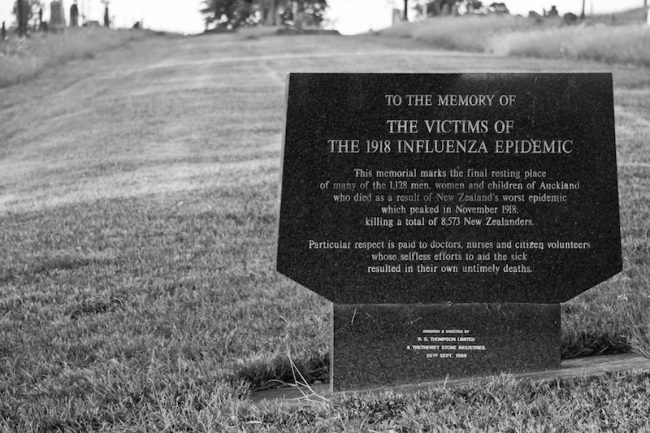Members of the SMU community filled the Gene and Jerry Jones Great Hall in Meadows Museum on Feb. 22 to learn about the evolution of the flu virus since 1918.
During a flu season that has seen abnormally large numbers of illnesses, hospitalizations and death, SMU’s Godbey Anniversary Lecture Series hosted Associate Professor of Anthropology Carolyn Smith-Morris to speak on “The 1918 Flu Epidemic: A 2018 Perspective.”
According to Smith-Morris, the flu pandemic of 1918 took the lives of 50 to 100 million people throughout the world, and while the epidemic of 2018 is nowhere near as destructive, Americans have seen a rise in flu related illnesses and deaths during the 2017-2018 flu season.
Although the numbers are hard to track, according to the CDC this flu season is on track to match or surpass the 2014-2015 flu season in which an estimated 34 million Americans came down with the flu, 710,000 were hospitalized, and about 56,000 died.
One point that Smith-Morris made during her lecture was the evolution of societal care. During the flu pandemic of 1918, patients were forced to find care in friends and family members because of the stress on hospitals.
“If a new infectious tragedy of that scale were to hit America soon, one might wonder what our social and volunteer force would look like,” Smith-Morris said.
As a part of her presentation, Smith-Morris showed attendees a PowerPoint slide that evaluated the seasonal flu vaccine effectiveness by year. With a 40 percent effectiveness, the 2017-2018 flu vaccine ranked as fourth lowest since 2004 with 2004-2005, 2014-2015 and 2005-2006 ranking the lowest respectively.
The lack of effectiveness by the 2017-2018 vaccine is believed to be partially responsible for the rise in numbers of illnesses and deaths.
Even though the flu season is nearing its end, Smith-Morris cautioned attendees to be wary of history.
“We have a strong arsenal – medicinal, mechanical and social – against infectious disease and its ravages. But as historians of this epidemic are fond of saying, we would be wise to remain cautious,” Smith-Morris told SMU Public Affairs.









